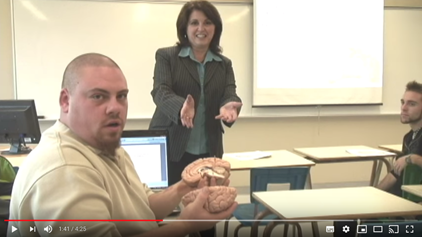Lesson 7 - Choosing Media
5. Video
5.3. Skills Development
This usually requires the video to be integrated with student activities. The ability to stop, rewind, and replay video becomes crucial for skills development, as student activity usually takes place separately from the actual viewing of the video. This may mean thinking through careful activities for students related to the use of video.
If video is not used directly for lecturing, research clearly indicates that students generally need to be guided as to what to look for in the video, at least initially in their use of video for learning. There are various techniques for relating concrete events with abstract principles, such as through audio narration over the video, using a still frame to highlight the observation, or repeating a small section of the program. Bates and Gallagher (1977) found that using video for developing higher-order analysis or evaluation was a teachable skill that needs to be built into the development of a course or the program, to get the best results.
Typical uses of video for skills development include:
- Enabling
students to recognize naturally occurring phenomena or classifications
(e.g. ,,) in context
- Enabling
students to analyse a situation, using principles either introduced in the
video recording or covered elsewhere in the course, such as a textbook or
lecture; for example,
- Interpreting
artistic performance (e.g. drama, spoken
poetry, movies, , sculpture, or other works of art)
- Analysis of
music composition, through the use of , narration and graphics
- Testing the
applicability or relevance of abstract concepts or generalisations in real
world contexts (see for example )
- Looking for alternative explanations for real world phenomena.
There are many ways in which video can be used for skills development. Nevertheless, however, video is used for skill development, as well as the demonstration of the skill, attention must be paid to ensuring opportunities for student practice and feedback, probably using other media, although it is now increasingly easy for students to make their own videos to demonstrate their skill.
